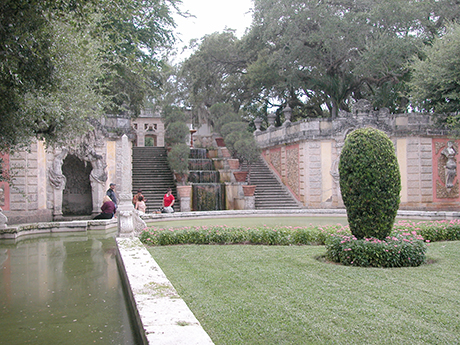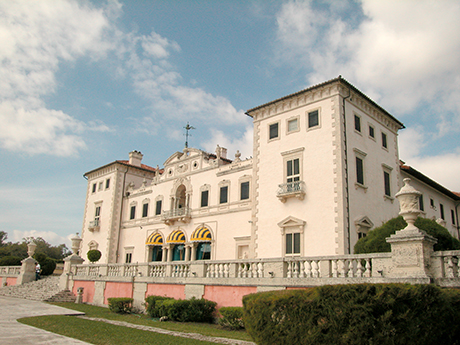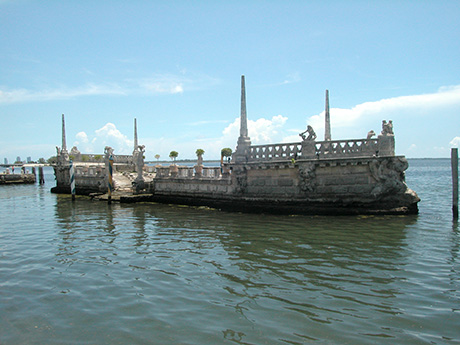The
documentation and recording of the Vizcaya Museum and Gardens was
conducted as part of an historic structures and landscape report
prepared by the Architectural Conservation Laboratory (ACL) at the
University of Pennsylvania.
|
|
|
 |
| The focus of this study
was to select representative examples of the existing formal gardens
that might provide a model for future documentation and reveal the
depth of study required for the conservation of the gardens as a
whole. Areas closest to the Bay were selected to
assess the impact past storms have had on the two gardens most at risk to
irreparable damage in future storms. |
|
| Vizcaya’s
villa has survived remarkably intact since its completion in 1922.
Conceived as a courtyard building, the villa is highly adapted to its
subtropical setting. Unlike the house, the gardens have undergone
significant changes since their completion in 1923. The outer gardens
and the agricultural landscape that surrounded the farm village have
all but disappeared due to sale of the land in the mid 20th century to
keep pace with the spiraling costs of maintenance. The periodic impact
of tropical storms and hurricanes, however, have created ongoing
conservation concerns that continue to impact the remaining property,
suggesting that without immediate attention continued loss of historic
fabric is inevitable, especially in light of climate change. |
|

|
 |
| A
view of the southeastern elevation of the villa looking due west. |
|
|
| The
majority of research and architectural recording was conducted during the months of June, July, and
August 2003. The focus of this phase was to record the historic and
existing conditions of the villa and garden. The ACL performed a
materials conditions survey and assessment of the villa and gardens.
Ceo & Nardi Inc. performed the research and recording of the Rose
and Marine Gardens. Saldaña
Design & Preservation Inc. performed
the research and recording of the villa. The project schedule and scope
of work limited the team(s) to record specific features and elements
representative of both villa and gardens. The general condition of the
villa was evaluated to be less critical than that of the above gardens
with regards to immediate conservation needs. As a result, the
conditions surveys and assessment work were executed in the Rose and
Marine Gardens. |
|
 |
The
stone "barge," once planted with ornamentals, is as functional as it is
ornamental. The structure acted as a breakwater to protect the
villa and gardens from storm surges.
|
|
|





